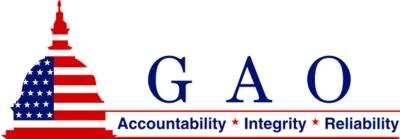Thu, Aug 02, 2012
Concerned About Government Responsibility For Third Party Losses
A report issued by the Government Accountability Office (GAO) indicates that the U.S. provides less commercial space launch indemnification for third party losses than China, France, and Russia, according to recent studies. These countries put no limit on the amount of government indemnification coverage, which in the United States is limited by the Commercial Space Launch Act Amendments of 1988 (CSLAA). Governments' commitments to pay have never been tested because there has not been a third party claim that exceeded a private launch company's insurance.

The GAO says that the potential cost to the federal government of indemnifying third party losses is currently unclear because it depends in part on the method used by the Federal Aviation Administration (FAA) to calculate the amount of insurance that launch companies must purchase, a calculation that may not be sound. FAA has used the same method since 1988 and has not updated crucial components, such as the cost of a casualty. Estimating probable losses from a rare catastrophic event is difficult, and insurance industry officials and risk modeling experts said that FAA's method is outdated.
FAA, however, has not had outside experts or risk modelers review the appropriateness of its method. An inaccurate calculation that understates the amount of insurance a launch provider must obtain would increase the likelihood of costs to the federal government; a calculation that overstates the amount of insurance needed would raise the cost of insurance for the launch provider. FAA officials said that their method was reasonable and conservative, but they agreed that a review could be beneficial and that involving outside experts might be helpful. Overall, they said use of more sophisticated methodologies would have to be balanced with the additional costs to both FAA and the launch companies that would result from generating and analyzing additional data.
The insurance market is generally willing and able to provide up to $500 million per launch as coverage for third party liability, according to industry representatives. Because the amount of insurance FAA requires launch providers to obtain averages about $99 million per launch, and coverage available through CSLAA is about $2.7 billion above that, insurers could provide some of the coverage currently available through CSLAA. However, the amount and price of insurance that could be provided could change quickly if a large loss were to occur, according to insurance industry representatives.
The GAO says the effects on global competition from the United States eliminating CSLAA indemnification are unknown. However, launch companies and customers GAO contacted believe that ending federal indemnification could lead to higher launch prices for U.S.-based launch companies, making them less price competitive than foreign launch companies. Although the cost of third party liability insurance for launch companies has been about 1 percent of the dollar amount of coverage they purchased, how much this cost might increase in the absence of federal coverage is not clear. Launch customers said that price and vehicle reliability were key factors in their choice of a launch company. Launch companies reported that additional costs would be passed along to customers, but whether this increase alone would be sufficient reason for a launch customer to choose a foreign company over a U.S. company is unclear.
More News
DETRESFA (Distress Phrase) The code word used to designate an emergency phase wherein there is reasonable certainty that an aircraft and its occupants are threatened by grave and i>[...]
Aero Linx: The International Association of Missionary Aviation (IAMA) The International Association of Missionary Aviation (IAMA) is comprised of Mission organizations, flight sch>[...]
Also: EP Systems' Battery, Boeing SAF, Repeat TBM 960 Order, Japan Coast Guard H225 Buy Despite nearly 100 complaints totaling millions of dollars of potential fraud, combined with>[...]
Also: Viasat-uAvionix, UL94 Fuel Investigation, AF Materiel Command, NTSB Safety Alert Norges Luftsportforbund chose Aura Aero's little 2-seater in electric trim for their next gli>[...]
Also: Moya Delivery Drone, USMC Drone Pilot, Inversion RAY Reentry Vehicle, RapidFlight UAVOS has recently achieved a significant milestone in public safety and emergency services >[...]
 ANN's Daily Aero-Term (04.26.24): DETRESFA (Distress Phrase)
ANN's Daily Aero-Term (04.26.24): DETRESFA (Distress Phrase) ANN's Daily Aero-Linx (04.26.24)
ANN's Daily Aero-Linx (04.26.24) Airborne 04.22.24: Rotor X Worsens, Airport Fees 4 FNB?, USMC Drone Pilot
Airborne 04.22.24: Rotor X Worsens, Airport Fees 4 FNB?, USMC Drone Pilot Airborne 04.24.24: INTEGRAL E, Elixir USA, M700 RVSM
Airborne 04.24.24: INTEGRAL E, Elixir USA, M700 RVSM Airborne-NextGen 04.23.24: UAVOS UVH 170, magni650 Engine, World eVTOL Directory
Airborne-NextGen 04.23.24: UAVOS UVH 170, magni650 Engine, World eVTOL Directory



